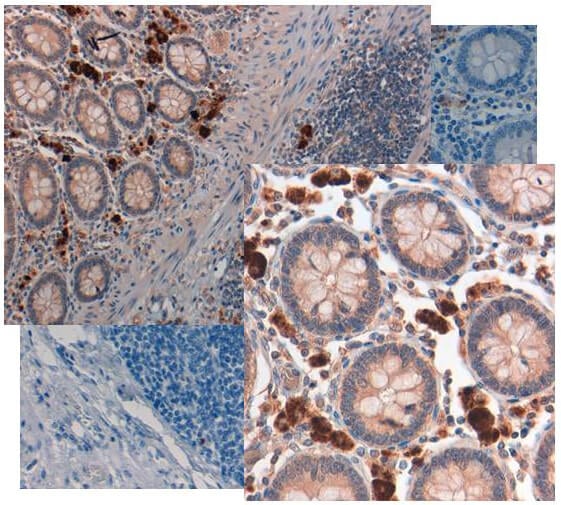Various neurodegenerative disorders and contributing factors play a pivotal role in the pathogenesis of dementia, leading to a gradual and irreversible decline in neuronal integrity and brain function. Early detection of dementia holds significant promise for effective intervention in these severe conditions. Notably, the deposition and aggregation of amyloid-β and tau neurofibrillary tangles within the central nervous system (CNS) have been recognized as crucial hallmarks of Alzheimer's disease (AD). Moreover, emerging evidence indicates that systemic factors and biological processes outside the CNS influence dementia risk. In a recent large-scale study conducted by Walker et al., 2023 and published in Science Translational Medicine, a proteomic signature associated with increased dementia risk has been identified, astonishingly detectable up to two decades before the manifestation of clinical symptoms.
The study included 10,981 participants, of whom 1,874 (17%) developed dementia by the end of the study period. Analysis of 4,877 plasma proteins found 26 proteins significantly associated with 25-year dementia risk. GDF15, a protein that plays a role in metabolic and immunoregulatory functions, exhibited the most significant correlation with the risk of dementia. Follow-up analysis revealed an additional 6 proteins associated near-term (<15 years) and another 6 asscociated with long-term (≥15 years) dementia risk (Table 1). The dementia-associated proteins were found to be predominantly associated with four overlapping biological processes: proteostasis, immunity, synaptic function, and extracellular matrix (ECM) organization.

Remarkably, several of the leading dementia-associated proteins identified in this study, such as GDF15, were present in low abundance or were undetectable in postmortem brain tissue. Despite their limited presence in the brain, these proteins, along with peripherally secreted proteins and genetic regulators, could still play a crucial role in influencing the expression of genes that show abnormal expression in AD brains. This intriguing discovery highlights the significance of investigating peripheral sources and genetic regulatory mechanisms in understanding the pathogenesis of AD.
The researchers propose that the identified proteins serve as a promising foundation for future investigations, as they hold potential as predictive markers for dementia. Moreover, their findings offer valuable insights into relevant biological pathways, and may aid in the discovery of early-stage markers and underlying molecular factors contributing to the disease.
| Dementia-associated Protein | Pathway | Associated with Dementia | Available Antibodies |
| GDF15 | Immune, Metabolism | All follow-up times | GDF15 Antibody GDF15 Antibody GDF15 Antibody GDF15 Antibody GDF15 Antibody GDF15 Monoclonal Antibody GDF15 Monoclonal Antibody GDF15 Monoclonal Antibody GDF15 H Variant Monoclonal Antibody |
| MMP12 | ECM, Immune, Proteostasis | 25-year follow-up | MMP12 Antibody |
| EPHA10 | Synaptic | 25-year follow-up | EphA10 Antibody |
| GLUL | Synaptic | 25-year follow-up | GLUL Antibody |
| GPLX2 | Synaptic | 25-year follow-up | - |
| FCRL4 | Immune | 25-year follow-up | FCRL4 Antibody |
| ABHD14A | - | 25-year follow-up | ABDH14A Antibody |
| HSPA1B | Proteostasis, Immune | 25-year follow-up | Hsp70 Antibody |
| HTRA1 | Immune, ECM, Metabolism | 25-year follow-up | HTRA1 Antibody |
| PSIP1 | Immune, Synaptic | 25-year follow-up | PSIP1 Antibody |
| GRID2 | Synaptic | 25-year follow-up | GRID2 Antibody |
| GABARAPL1 | Proteostasis | 25-year follow-up | GABARAPL1 Antibody |
| SMC3 | - | 25-year follow-up | SMC3 Antibody |
| MB | Vascular | 25-year follow-up | Mesothelin Antibody |
| MMP19 | ECM, Immune | 25-year follow-up | MMP19 Antibody |
| CPLX1 | Synaptic | 25-year follow-up | Complexin 1 Antibody |
| NDST1 | Metabolism | 25-year follow-up | NDST1 Antibody |
| DNAJB12 | Proteostasis | 25-year follow-up | DNAJB12 Antibody |
| CRLF1 | Immune | 25-year follow-up | CRLF1 Antibody |
| ADAMTSL2 | ECM | 25-year follow-up | ADAMTSL2 Antibody |
| LEFTY2 | Immune | 25-year follow-up | LEFTY A Antibody |
| F8 | Vascular | ≥15 years | Factor VIII Antibody |
| CLSTN3 | Synaptic | ≥15 years | Calsyntenin 3 Antibody |
| ALB | - | ≥15 years | Human Serum Albumin Antibody |
| FBLN5 | ECM | ≥15 years | Fibulin 5 Antibody |
| DNAJB9 | Proteostasis | ≥15 years | DNAJB9 Antibody |
| CBLN4 | Synaptic | <15 years | CBLN4 Antibody |
| EGFR | Immune, ECM | <15 years | EGFR Antibody EGFR Antibody EGFR phospho Y1197 Antibody |
| IGFBP2 | Metabolism, Immune | <15 years | IGFBP2 Antibody |
| GHR | Metabolism, Immune | <15 years | Growth Hormone Receptor Antibody |
| FAP | ECM | <15 years | Fibroblast Activation Protein Antibody |
| SERPINA3 | Immune, Proteostasis | <15 years | SERPINA3 Antibody |
Table 1: Proteins identified in a proteome-wide association study for 25-year dementia risk.
References